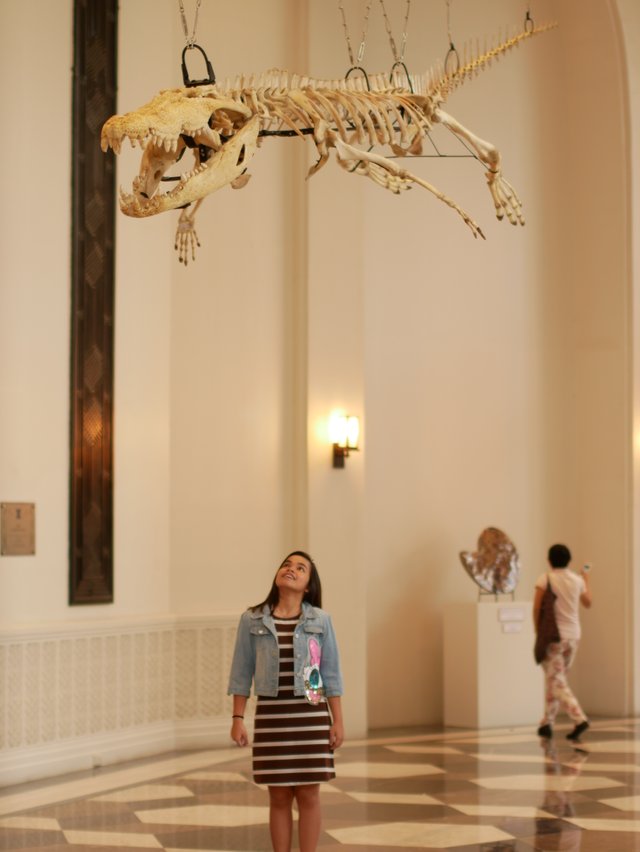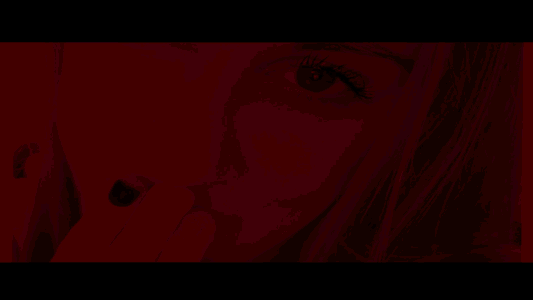Death of a Behemoth
Ecology is the interaction of organisms and their environment. What if the balance has been disrupted due to human population? As population grows residential areas expands taking over lands, marshes and coastal areas. Certain ecological effects are sometimes not considered in the process of expansion. This in effect causes a disruption in the community and hierarchy of the food chain for that particular area.
Death of a Behemoth


In September 2011 with the joint venture of the government, residents and hunters. It took three weeks before he was captured. Breaking ropes it took more than a hundred people and steel cables to finally restraint the behemoth.
This is the replica of Lolong which is on display at the Museum of Natural History.
Animal activists proposed his release back into the wild in which was rejected by the government. Since people has already gone missing it is a risk for the local community if the crocodile will be released.
Introduction of human population in the marshlands has disrupted the ecosystem of the territory. Humans has been recognized as prey upon occupying it's natural habitat. Careful study and planning should be considered before populating an area of land. In this tragic example tells us that boundaries should be set in order not to over step into specific territories with species that we cannot closely coexist with.
Another example of this disruption is during the construction of the Uganda Railway in 1898 where the Tsavo Man Eaters hunted down railroad workers. Two male lions which are maneless terrorized the campsite and preyed upon Indian workers. The total casualty count was claimed to be 135.
The skeletal remains of the giant crocodile now hangs from the ceiling in this section of the museum.
Crocodylus Porosus
The scientific name for the salt water crocodile known to grow up to 23 ft and the largest of all reptiles. Thrives in marine environment and can be found in swamps, brackish waters, rivers and lagoons. They are known to prey upon large animals like deer, boars, kangaroos, sharks and even cattle or water buffaloes.

On February 2013 the giant crocodile was found dead and bloated. Refusing to eat for days and with poor living conditions. It has been determined that the cause of death was pneumonia and cardiac arrest. Also as a contributing factor is a fungal infection that the creature has been suffering with. In addition to the shallow water and lying on concrete for long periods of time may have caused stress for the animal. Although a lot of crocodiles survived captivity this was probably not meant to be confined.
It has not been proven that Lolong was responsible for the death or missing fishermen. There are a lot of factors that may have contributed for it's attack on domesticated water buffaloes.
It has been known that during the 1960's crocodile population was controlled by hunting which was banned in the 90's. The population of the crocodiles may have increased and allowed them to grow to its full potential.
With the increase of the crocodile population, competition for prey may have occurred. They may have turned to local livestock in the area and possibly may have preyed on the inhabitants as well.
Shrinking territory caused by natural causes and land development may have forced them to migrate into a smaller area. As the territory decreases they are confined in a area closer to the community.
Coexisting with some of the most dangerous predators is a rare occurrence in populated areas. In this battle we already know who the losers are. Yes land is needed to develop the increasing population but the question is, "Up to what extent?"
Today it is known that there are still a lot of giants in the marshes of Bunawan. Some sightings suggest with crocodiles reaching up to 30 feet. Which in turn encourages again another hunt to put this giant on display. My suggestion is to first consider the boundaries of each territory that would be beneficial to both. If another person goes missing they easily dismiss that the suspect is a monster that lurks in the marshes. Living near the area of predators there repercussions that must be considered as we are the invaders.
Territory
They will attack anyone that enters their territory. Animal behavior is a natural instinct to defend against other species who enters their domain. Factors that contributes would be
- Survival
- Raising of offspring
- Food sources
- Mating area
- Nesting area
Today more and more areas are being developed and disturbs the natural ecosystem. The impact can be seen in cases like the Tragedy of Lolong. It is quite possible that soon we will no longer have giants hiding in the marshes. As the area grows smaller there would be no more hiding places. A sad probability that the rest of them would end up hanging on the wall or confined in eco parks and zoos.
Sources and Resource
Lolong
Bunawan, Agusan del Sur
Ecology
Tsavo Man-Eaters
Saltwater Crocodile
Territory
Photos are original and shot from the
National Museum of Natural History

Follow @surpassinggoogle to witness an extraordinary person in this platform and vote for @steemgigs as witness
Discovering exceptional content in the community follow @curie and vote as witness
To have a glimpse of awesome content from the Philippines check out @bayanihan
See unique culture from around the world and join the challenge thru #culturevulture by @eroche
All photos are original and taken with
Lumix GX85 Sigma 50mm 1.4 and 12-32 mm


.gif)


Lumix GX85 Sigma 50mm 1.4 and 12-32 mm


.gif)












My family and I lived in Bislig, Surigao del Sur from 1971 until 1979. The village we lived in was near vast coastal marshlands surrounded by jungle.
As a young boy growing up there, we often heard stories about huge saltwater crocodiles lurking in the marshes, esp. in the brackish waters near the coastal highway.
Some soldiers my Dad knew told us that some kidnap gangs would throw their victims into the marshes if their families failed to pay their ransom.
We don't know if it was true, but we knew from some tribal folks that kidnap gangs, communists rebels, and other lawless elements often hid in the jungles near where there were reported sightings of crocodiles.
But some tribal members told us that they had lost some of their people to those monsters in the waters.
I was lucky enough to have seen some of them in the wild, and also some live ones captured by hunters and sold for their meat along the coastal highway.
The name of the village we lived in is Forest Drive Village. And if you will look at it in the map, you will see that it is just some 15 or 16 miles east of Bunawan, where Lolong was captured.
Quite a tale you have there. Especially the part about the kidnap gangs which is frightening. Our country has a lot of marshes filled with legends and I wish there was is a way for us to safely observe them without disrupting their habitat. Indeed you are lucky to see some of them out in the wild.
Yeah, everyone I've told about it were amazed by my family's experiences, and also about the fact that we have those giants still living in some of our waters.
And although they are on the local endangered species list, I am not that concerned because Australia's population of saltwater crocs have recovered since the ban on hunting that they imposed in 1971. So, they are our go-to country, in case we need to re-stock our population.
I am more concerned with our Phil. eagles, though. Once they go extinct, there is nowhere to go and ask for specimens from, to start a breeding program.
And as fortunate as my family and I were to have observed some of our county's beautiful wildlife, it came with a price.
We lived there at a time our govt. was waging a war on communist insurgency and Muslim rebellion, and Mindanao was the center of that war. Living there in Surigao del Sur, we have experienced what it was like to be in a warzone.
We have seen firefights between govt. troopers and NPA rebels right outside our house, and my sisters and I have seen their dead, as their bodies were laid out on the side of the road awaiting retrieval by the Army.
Imagine being 3 or 4 years old, and seeing those things at such a young age. And even though we were partially raised in our maternal grandfather's military household and told of his wartime stories, looking back at those memories 40 years later, those are the things that innocent eyes should not have to behold.
And that's why when I engage with talks about crocodiles, all these wartime memories come to the fore. Now, this reply has whetted my appetite to write about all the creatures I've seen in our 8 years there, and I'll put it in my to-do list, and drop you a mention when I've posted it someday. :)
That is a very traumatic experience seeing such things at an early age. War is ugly I dream of a time when all the places in our country would be safe to visit. Sad to say it is still on going in some places. Our country has so much beauty and mysterious places to offer. I hope one day all will just be a memory and heal the present for a future with so much potential.
I'm glad our talk inspired you to share more about your tale. I will be looking forward to it. Peace bro.
Read my profile if want me to resteem your post to over 72,500 followers. @a-a-a
Looking at Lolong reminds me of Bujang Senang (a man-eating crocodile) in Sarawak, Malaysia.
Ah yes I think I saw him when I watched a video of the top 10 crocodiles. He is the one with the white streak at the back right?
lolong was featured on television last 2 days that is is under the process of taxidermy to preserve its body and will be display in the museum this coming July I think.. The one that is displayed now is a replica made of special material and resin.. As soon as the taxidermy process is completely done they will replace the dummy display of lolong..
Ah this is something we will be looking forward to.
Wow! It would be scary to know that it was living nearby! Great photos!
He was a giant and according to news more are still lurking deep in the marshes. I just hope they leave it alone and let nature take its course.
Congratulations! This post has been chosen as one of the daily Whistle Stops for The STEEM Engine!
You can see your post's place along the track here: The Daily Whistle Stops, Issue #159 (6/8/18)
The STEEM Engine is an initiative dedicated to promoting meaningful engagement across Steemit. Find out more about us and join us today.
Wow, that crocodile is huge! It would be so wonderful if we were all able to live side by side peacefully without eating or killing each other. Such a wonderful but fearsome creature. Makes me really wish that we were living in a place just like the Garden of Eden where everything is abundant. You are right, man really needs to learn boundaries.
That would be a wonderful sight like the garden of Eden. When you could sleep and cuddle beside a lion. Lolong was 50 years old and was like a dinosaur such an amazing creature.